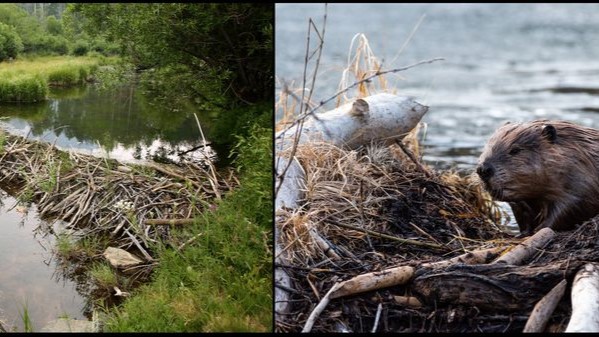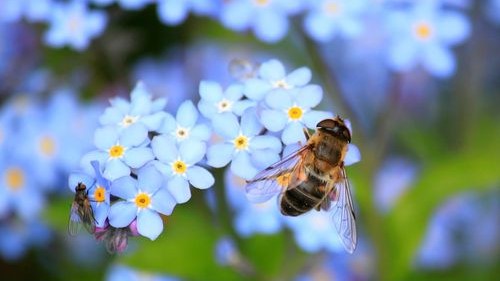Do you know which animals are experts at managing water? Beavers! Beavers cut down small trees by chewing around the trunks. Then, they use the wood to build dams in rivers and streams. The dams slow the water flow and create deep ponds where beavers can build their homes, called lodges.
Why is managing water so important? Water is a vital resource for all living things, but too much water can be destructive. When fast-moving water washes topsoil and rocks (called sediment) from the banks of rivers and streams, the sediment travels downstream. Flooding from heavy rain storms may wash sediment to places where it harms both wildlife and people. The water also can sweep fish and other wildlife away from their homes.
So when researchers wanted to learn how to improve riverbanks to help prevent flooding, they studied beavers. Beavers are often called “nature’s engineers.” Beaver dams act as speed bumps to slow the water and spread it out over an area called a floodplain.
When water spreads out, it creates wetlands and wet meadows. These wetlands hold water the same way a sponge does, releasing it a bit at a time, which helps prevent flooding. The wetlands also filter sediment and pollutants from the water. This makes the rivers cleaner and provides new habitats (homes) for fish and birds. In the American west, wetlands cover just 2 percent of the land but contain as much as 80 percent of the region’s biodiversity! That means just a few wetlands are home to many different species of plants and animals.
Because of the way they manage water, beavers serve as a keystone species. This means they support many other animals, including birds such as swans and ducks, and even fish such as salmon and trout. Some scientists compare beaver ponds to rain forests and coral reefs in their support of biodiversity.
Many years ago, beavers were trapped for their fur. Unfortunately, in some areas in the western United States, when there were no beavers left, wetlands dried up. In some areas the wetlands were purposefully drained. This led to a decrease of wildlife and an increase in flooding in some areas. Now, we know how important wetlands are to prevent flooding and support wildlife. And by imitating nature’s engineers, people have learned how important beavers are to wetlands.
In western Colorado and eastern Utah, along the Little Dolores and Colorado rivers, conservationists are mimicking or copying beavers by building beaver-like structures. These conservationists place large tangles of logs and branches in the water to imitate the size and shape of a natural beaver dam. Organizations working together hope these dams will improve the riverbanks and create new homes for a threatened bird called the Gunnison sage-grouse. They hope the improved riverbanks will also create new homes for elk, mule deer, wild turkeys, and ducks. They also hope better riverbanks will provide better grazing for livestock.
In Montana, people are using imitation beaver dams to help restore wet meadows in eastern parts of the state. People are planting native wildflowers to help speed up the restoration. This will also improve the habitat for the greater sage-grouse, which is an important species of bird. The project includes ranchers and other private landowners, the National Fish and Wildlife Foundation, and the National Wildlife Federation.
Beaver dam imitations also can be used to increase the chance that beavers might move there on their own. In some cases, conservationists move beaver families from other areas in the hope they will want to live in these new neighborhoods!









